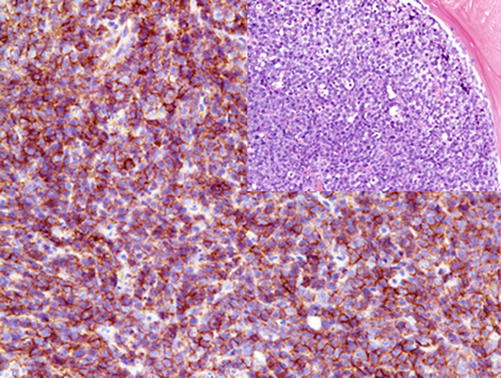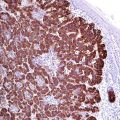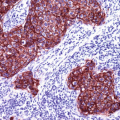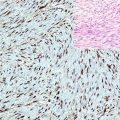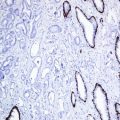, Hans Guski2 and Glen Kristiansen3
(1)
Carl-Thiem-Klinikum, Institut für Pathologie, Cottbus, Germany
(2)
Vivantes Klinikum Neukölln, Institut für Pathologie, Berlin, Germany
(3)
Universität Bonn, UKB, Institut für Pathologie, Bonn, Germany
Myeloperoxidase (MPO) | ||
|---|---|---|
Expression pattern: cytoplasmic | ||
Main diagnostic use | Expression in other tumors | Expression in normal cells |
AML | Granulocytic sarcoma | Myeloid cells, monocytes |
Positive control: bone marrow | ||
Diagnostic Approach
Myeloperoxidase (MPO) is a heme protein and one of the main lysosomal enzymes in myeloid cells released during degranulation. MPO positivity is diagnostic for neoplasia of myeloid origin. MPO is constantly absent in normal and neoplastic lymphoid tissue.
CD15:
CD15 is a further important marker for the myeloid lineage listed in details in the previous chapter. CD15 is expressed on the majority of granulocytes and monocytes and relates neoplasms.
CD33 | ||
|---|---|---|
Expression pattern: membranous/cytoplasmic | ||
Main diagnostic use | Expression in other tumors | Expression in normal cells |
AML (M0-5), CML | B- and T-ALL, ALK+ anaplastic large cell lymphoma | Monocytes, premyelocytes, myeloid blasts, dendritic cells, mast cells |
Positive control | ||
Diagnostic Approach
CD33 is a transmembrane glycoprotein involved in cell-to-cell adhesion. CD33 is expressed in the early myeloid progenitor cells after CD34 but absent in stem cells [2]. The expression of CD33 persists during myelomonocytic differentiation and is weakly detectable on granulocytes, monocytes, mast cells, and dendritic cells. CD33 is an important marker for most types of acute myeloid leukemia (M0–M5) (Fig. 17.1), chronic myeloid leukemia (CML), and granulocytic sarcoma in addition to chronic myelomonocytic leukemia.

